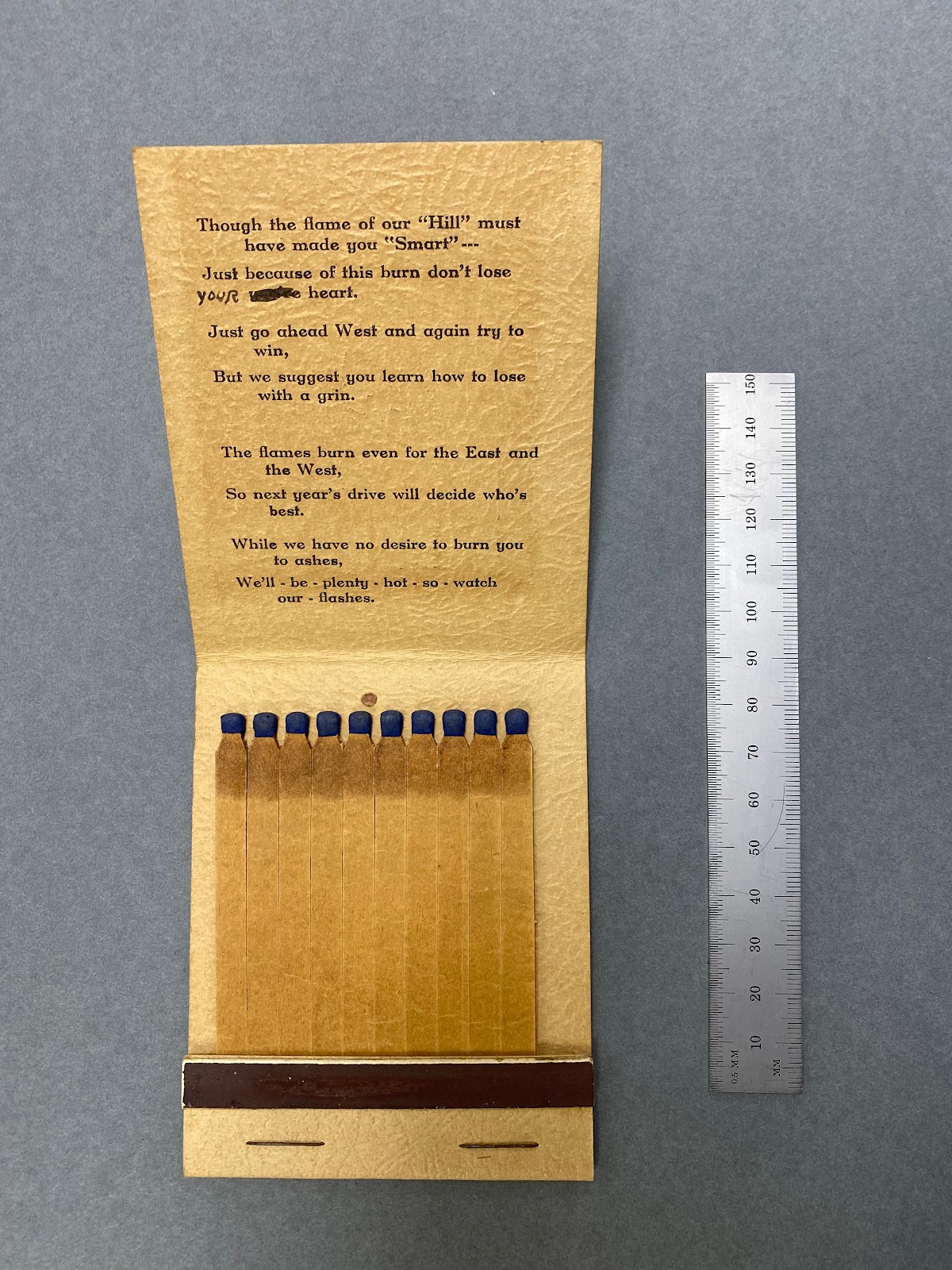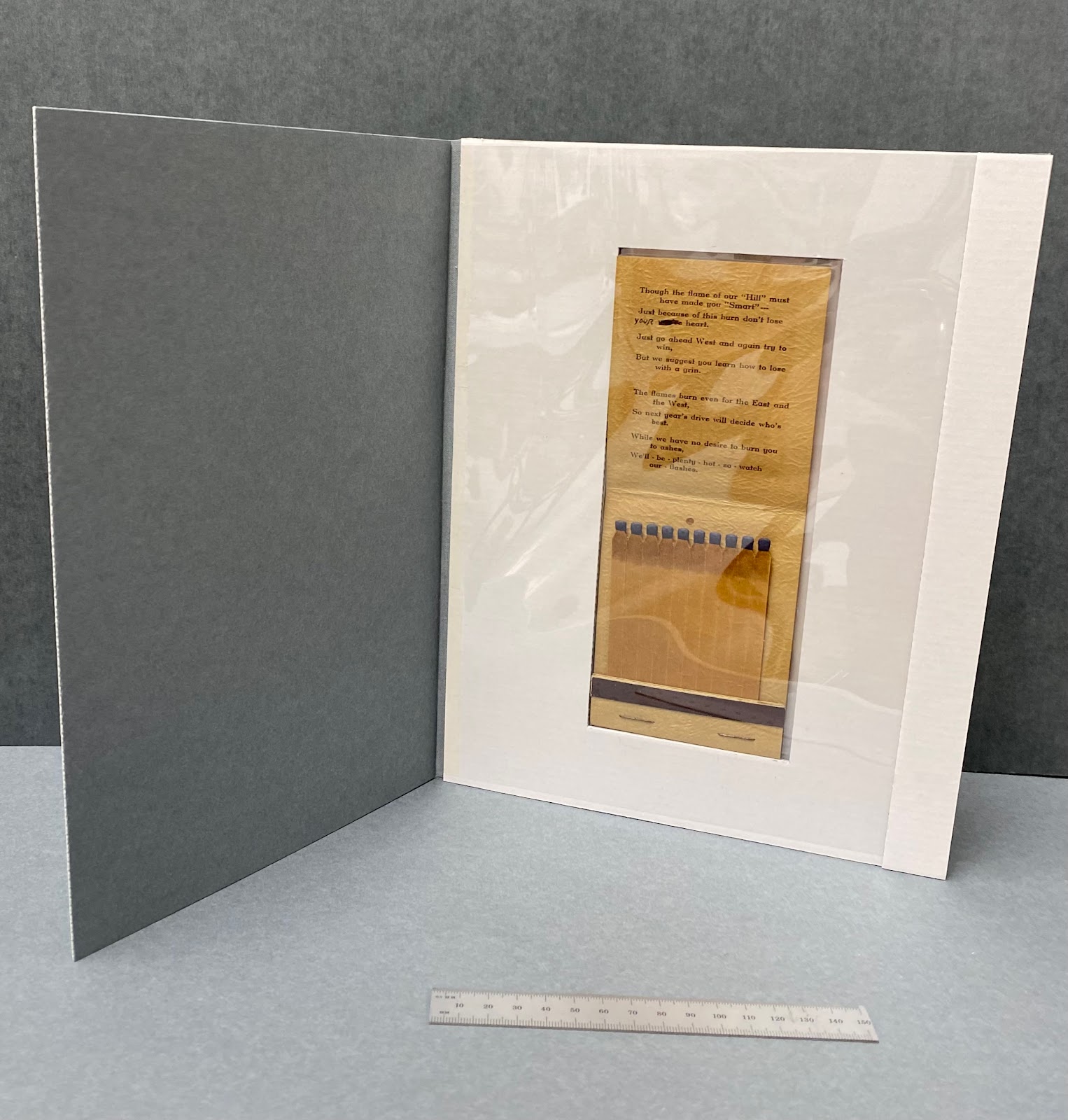The Special Collections and University Archives continues to
build their collections, strategically investing and acquiring significant,
unique and interesting items. These
collections further the interest of the University as scholars, researchers and
patrons seek discoverable information that furthers their knowledge and
understanding of both the past and the future.
Occasionally, items acquired are in sizes that are less common. We have recently acquired several very small
items that presented us with an opportunity to construct thoughtful and
intentional enclosures. Many times,
smaller items require a larger enclosure so it may claim it’s space on the
shelf, and not be overshadowed or overwhelmed by its neighbors.
I selected an
interesting artist book titled “Trains” by Kathy and Gary Miller of Iron Bear
Press to create a unique enclosure. The book measures 2.875” x 1.75” x .25”,
that includes its own paper slipcover that is imprinted with images of railway lines. It has beautiful polaroid photo transfers and
is constructed in an accordion style format. The story speaks of memories of
watching trains, counting cars and pressing pennies on the tracks, which
resonated with me, as this is a very fond memory of my own, when visiting my
grandmother’s house when I was young. I
designed a special clamshell enclosure for this small volume. I created a drawer, into which the book can
rest and remain secure, until it is retrieved for viewing. The overall
dimensions of the enclosure are 6” x 9” x 1”.
Our manuscripts archivist, Stacey Krim, discovered an oversized
match book while recently processing the Marjorie "Marge" Burns Papers. The question was
raised regarding the safety of storing a potentially combustible item within a
collection. While researching options
and opinions, she discovered one solution that was implemented at Smithsonian
Institute Archives whereby a sink mat was created to surround the matchbook and
enclosed with mylar. I decided to create
a similar enclosure. By utilizing the
mylar, any potential friction would be minimized, thus limiting combustion of
the match heads, although there is the theory that in many cases, match books
of this age are most likely inert.
This item will be stored in a file, so I created a two-sided mat,
wherein both sides of the match book are visible. On one side of the
construction, the Mylar is tucked under the corrugated board, allowing it to be
lifted, if there is need to temporarily remove the match book.










No comments:
Post a Comment